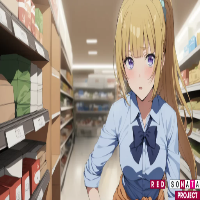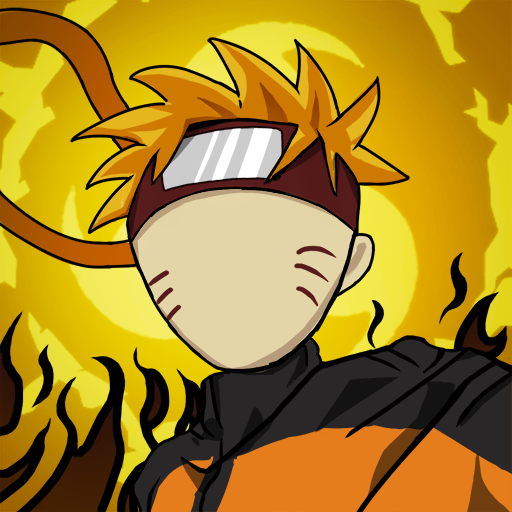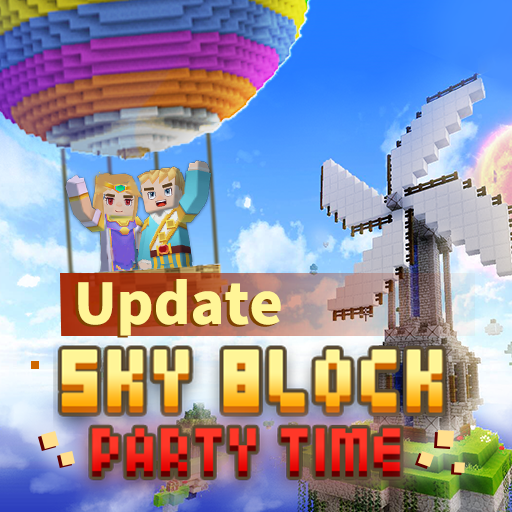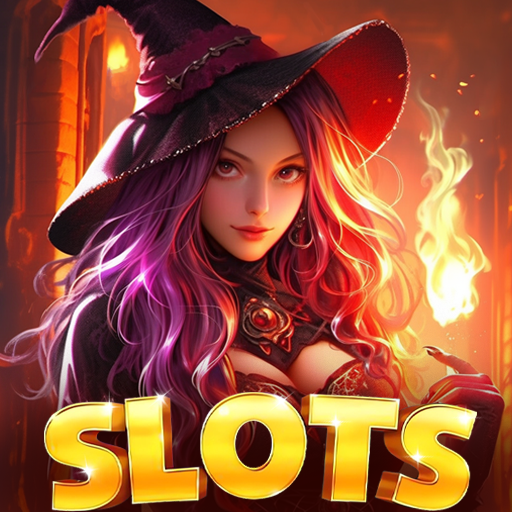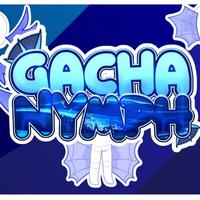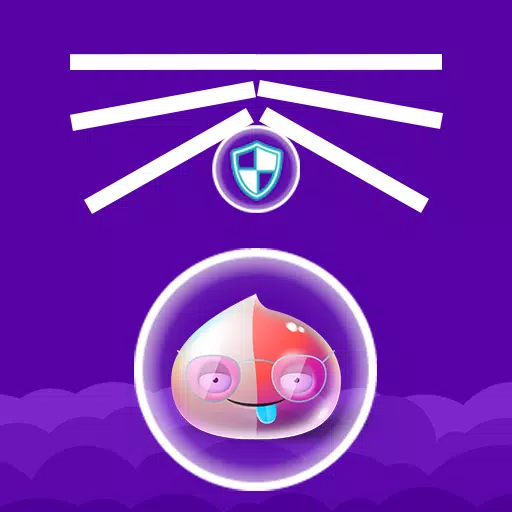Superhero comics have transcended traditional formats, inspiring not just movies and TV shows but also high-quality podcasts and audio dramas. DC's latest venture into this space is the ambitious podcast series, DC High Volume: Batman, which aims to bring some of the Dark Knight's most iconic comic book stories to life in a new medium. However, to truly appreciate the depth and breadth of this project, you shouldn't just stop at the main series. DC is also launching a companion show within the same feed, hosted by writer and journalist Coy Jandreau. This companion series will delve into the making of DC High Volume: Batman, featuring interviews with the cast, crew, and the original creators whose work inspired the podcast. The inaugural companion episode, set to release on Thursday, April 24, will include conversations with Batman voice actor Jason Spisak and DC's Creative Director of Animation & Audio Content, Mike Pallotta.
IGN recently had the opportunity to discuss this exciting project with Jandreau, gaining insights into how the companion series enhances the overall Batman experience.
What Is DC High Volume: Batman?
To fully grasp the significance of the companion series, it's essential to understand the scope of DC High Volume: Batman. This series is a groundbreaking collaboration between DC and podcast giant Realm, aiming to deliver an ongoing audio drama that closely adapts iconic Batman comics such as Batman: Year One. The series features Jason Spisak voicing Bruce Wayne/Batman and Jay Paulson as Jim Gordon.
"DC High Volume is the first of its kind to this scale, essentially a one-to-one telling of classic Batman comic books but in this incredible audio long-format radio play," Jandreau told IGN. "It's taking Batman: Year One, The Long Halloween, and turning them into this full, immersive audio experience with incredible production design, audio special effects, super-talented voice actors, and a score where different villains and heroes/characters have their own piece. It adds up to this incredible new way to listen to a story that, for me, I've been reading my whole life but now can hear in a new way."
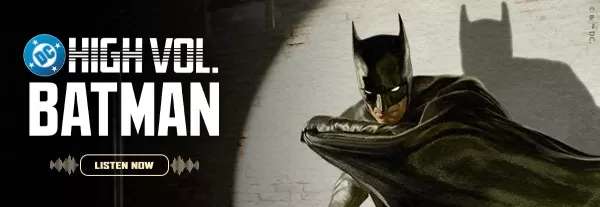
The series begins with Batman and Gordon's shared origin story in Year One and progresses into The Long Halloween, set in Year 2 of Batman's career. Jandreau emphasizes that the goal is to craft an ongoing narrative using these seminal graphic novels as key chapters in Batman's story, providing a jumping-on point for both die-hard fans and newcomers.
"The idea is to have the long-running Batman myth but in this new medium and allow the audience, whether they're ride-or-die fans like myself or brand-new audience members who might only know the character from movies or animated series, to have a jumping-on point," Jandreau explains. "It's going back to the roots for a reason and playing the big moments but in this shared universe and keeping the same voice actors, ensuring it's something that grows and evolves through the storytelling of these classic stories."
As a lifelong comic book enthusiast, Jandreau sees the value in experiencing these iconic stories in a new format, translating them from a visual to an auditory medium.
"Listening to this, it's crazy the emotion and the experience that comes out of these stories in a different way," Jandreau says. "I don't personally see it as subtracting art. I see it as adding audio. And what's really great is you can listen to these by themselves, in a car, with incredible headphones, or with tower speakers and get an experience. You can also listen while you read if you want, and then you've got a full different experience than just audio. You can also do this and have conversations around a fire in the old 1920s way. And there's so many ways to do it, but none of them are taking away from the comic. And I love that because I've listened to this by itself, I've listened to this while reading, I've listened to this while driving, and each version is different, but none of them make the comic any less interesting."
The High Volume Companion Series
Jandreau's companion series serves as an extension of the DC High Volume: Batman saga, exploring the behind-the-scenes process and the challenges of adapting comics for audio. The series will be available both in audio format on the DC High Volume: Batman feed and as a separate video series, with the first episode premiering on April 24, just one day after the main series kicks off its adaptation of Batman: The Long Halloween.
"They've been developing this for a number of years before I was brought on board, but they always wanted to highlight the incredible behind-the-scenes talent," Jandreau notes. "Whether it's voice actors, the composer, people at DC involved all the way to the writers and artists of the original stories, they always felt it was important for people to get to know them as well."
Jandreau was chosen for this role due to his work on the DC Studio Showcase video series, which made him an ideal candidate to explore the making of DC High Volume: Batman.
"I've been working at DC Studio Showcase, which is a bi-weekly show every other Friday on Max and Max's YouTube, and that is the studio side. DC Studios being the James Gunn, Peter Safran leg of this world they're building, and I'm the comic correspondent there. Once that started going well, they tapped me to do this, and I was so honored because comics are the reason I want to do any of this. I love the medium of comics, so it's really cool to have a show that's about comics and another way to adapt them."
In the first companion episode, Jandreau discusses with Spisak the challenge of finding Batman's voice in this universe and how it changes depending on which characters Batman interacts with.
"Not to give spoilers for the first episode, but talking to Jason Spisak, who is our Bruce Wayne/Batman, he really found a fascinating new take on Batman in doing the role," Jandreau says. "In Year One, as you've been hearing, it's Bruce Wayne becoming the Bat, and we've seen that in TV, movies, and read it. But hearing it, it's fascinating to hear the Bat voice develop, to hear it play like an equalizer and discover levels in it and how Batman sounds with Gordon versus how Batman sounds with Alfred versus how Bruce Wayne sounds with Alfred versus, what does the voice in Bruce Wayne's head sound like, and does that change as he becomes Batman?"
The structure of the companion series is less rigid, tied more to key emotional beats and plot points from the main series rather than strictly following each chapter.
"It doesn't always go this is Year One four issues, and then we have a conversation, and then it's Long Halloween," Jandreau explains. "I actually love our first one is following a huge moment in the first issue of Long Halloween. We've got Year One, and then we have right from Year One a beat of Long Halloween. And then I dive in, and that way I got to discuss the evolution from Year One into Long Halloween, the character growth and all those things. It's more for me trying to hit an emotional beat that resonates with the people I'm interviewing that ties into where the audience is getting that interview, and I always want to make sure what I'm doing is additive to their experience. It's giving them context at the right time to what they just experienced."
Jandreau draws inspiration for his show from various sources, including Inside the Actors Studio, Hot Ones, and classic late-night talk shows.
"I went Inside the Actors Studio. James Lipton has always been a hero of mine. It was kind of a blend of how James Lipton does his interviews in long form meets how Sean Evans finds very nuanced ways to uncover new ideas from the talent across the table's perspective. And then old-school talk show Johnny Carson, Conan O'Brien. A blend of long-form Lipton, new wave, ‘find a question talent has never been asked’ Sean Evans. And then I want it to feel the energy of a talk show a la a Conan or a Johnny Carson. To me, I want to blend all the different forms of this."
The Future of DC High Volume: Batman
Looking ahead, Jandreau is eager to interview key creators for the series. He's particularly interested in speaking with The Long Halloween writer Jeph Loeb and his Batman: Hush collaborator Jim Lee.
"Jim Lee, now that he's at his position at DC, has been so inspiring because he's got so much creative oversight while also being an artist," Jandreau says. "His own work is some of my favorite, and his insight is some of my favorite. Since he inspired so many stories I love and because of what he's doing at DC broadly, I think Jim Lee is definitely one."
Jandreau continues, "Jeph Loeb I've actually talked to at Cons. I've hosted some of his panels, and Jeph Loeb is responsible for so many of the comics that I consider the framework for the adaptations people know. When people look at classic Batman stories, a lot of times they don't realize it's Long Halloween. A lot of the DNA of Long Halloween. It's a lot of Dark Victory, and I feel like Jeph Loeb is someone who I want to have that long-form chat with to have that insight."
"Jeph Loeb and Jim Lee also just very conveniently are doing Batman: Hush again. Those two guys are absolutely cornerstones for me. I want to pick their brains about Batman."
Jandreau also hopes to interview Tom King, whose lengthy Batman run from 2016-2019 included the controversial, failed marriage between Batman and Catwoman.
"He used to work for the CIA, and he literally has lived a Batman-adjacent life," Jandreau says. "The way he sees Batman and his view of the Bat and the Cat, the way he writes love, the way he writes women, the way he writes this pathos and vengeance, and especially the way he writes Bruce's pain and learning from it has always been how I see Bruce Wayne."
Jandreau continues, "And I've really wanted to have a conversation with him in a way that I got to share it with others. I've talked to him briefly at Comic-Cons and those places, but I think it'd be really great to talk with someone who did such a long run on Batman who is currently working on the Lantern show. He's responsible for Supergirl: Woman of Tomorrow which is being adapted. He's clearly such a diversified talent in what's being adapted. It'd be really cool to talk with him about Batman while we are adapting it in an all-new way. Tom King's up there as well."
Ultimately, Jandreau hopes his companion series can foster positivity within the Batman fandom.
"I think the internet can be a very dangerous place," Jandreau says. "I think it can be a place of hostility, especially in fandom, right? Genre content is very tribal because people are protective over these stories. These stories mean the world to them. There's so much passion, which is why they thrive, which is why Batman's been around for so many decades, which is why these stories can come out weekly, and we can still get excited about them, which is why you can adapt them so many times, so many ways."
Jandreau continues, "I think it's important we find the positivity in that because there's plenty of negativity in the world. I don't see any reason to make negativity about this genre content, about this fandom. I just think any way we can make fandom more positive and we can share in the internet a little bit more in an uplifting way ... That's what I want to do with this show and any show I'm a part of. I hope it makes comic fans, especially diehards, that have wanted to share in these stories in a new way, feel like they have a new home, a new comic store, but I also hope people that have always been like, ‘Batman's so cool. I wonder what it's like to read a comic book,’ ... They get a chance to also come in and go, ‘This is something so special.’ We want this to be the least gatekeeping. The comic book store door is wide open, and that's really important to me."
For more Batman fun, check out the top 10 Batman costumes of all time and the top 27 Batman comics and graphic novels.


